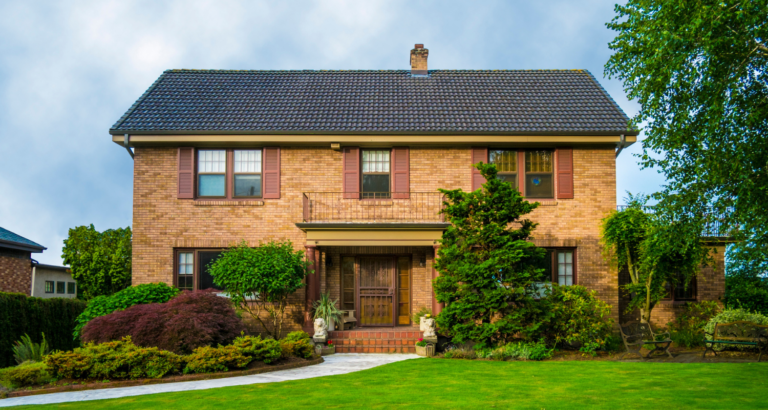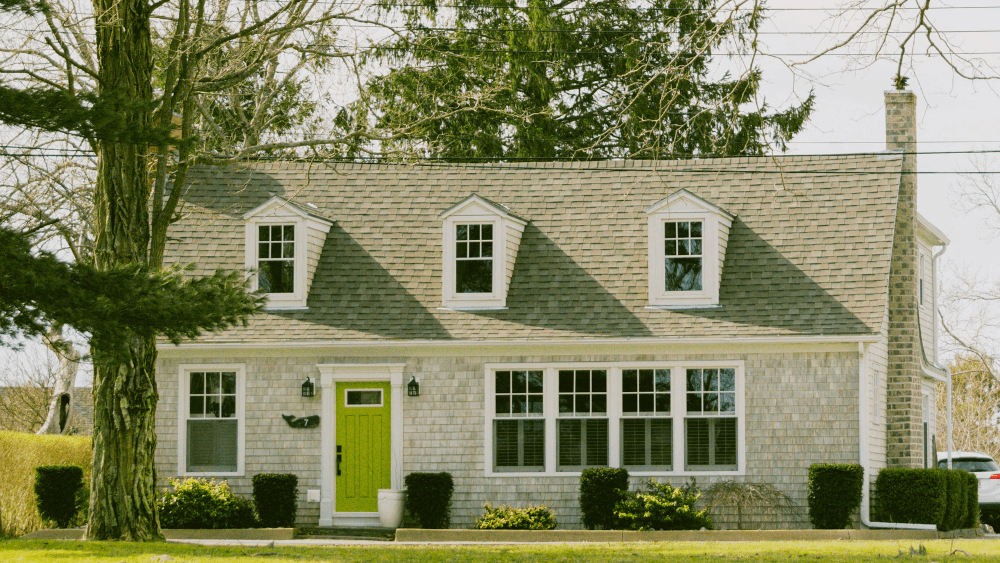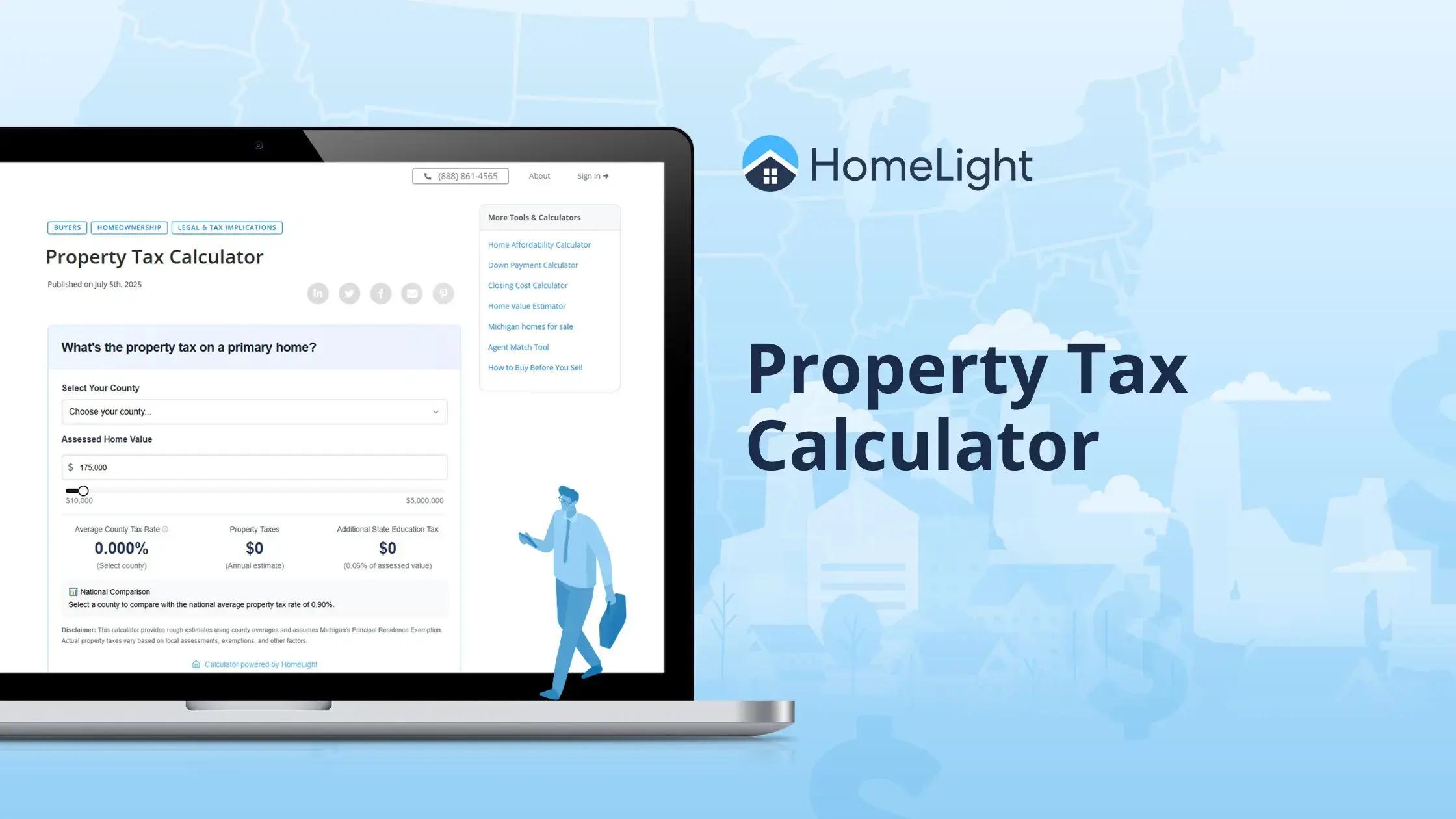
Like many homeowners, you may have recently received an envelope or email informing you that your homeowners insurance rate has gone up. Perhaps you received such news with resignation, or perhaps you read the new premium with a knot in your gut. Instead, maybe you’re getting ready to buy a home and, after seeing headlines about rising homeowners rates, you’re worried — wondering how much a policy will cost for your new home and whether there are ways to save money without skimping on protection. You’re not alone. According to Policygenius, around 90% of U.S. homeowners saw their home insurance premiums increase over the last year. While that may not make the increased expense easy to swallow, understanding why rates have gone up and learning a few ways to mitigate the rising costs may help. For a look into the factors driving home insurance rates higher, plus what you can do to help reduce your costs, we’ve gathered research and spoken to several industry experts to share their insights here. Due to a high number of severe weather events and natural disasters, it’s been an expensive few years for insurance agencies. In 2021 alone, U.S. insurers paid $92 billion worth of damages due to natural catastrophes. Michael Orefice, the senior vice president of operations at SmartFinancial insurance portal, points to examples like unusually high rates of wildfires in Colorado and California, Winter Storm Uri in Texas, Hurricane Ida in Louisiana, and Hurricane Ian in Florida. As a result, Orefice adds, “All insurers are terrified at the devastation severe storms are causing around the country.” Some insurers have pulled out of entire states, specific ZIP codes, or geographic regions where they have incurred too many losses or which they consider too risky. “There’s been far more natural disasters that have just made a lot of carriers kind of move out of the market” — especially in California and Florida — says William Lemmon, co-owner and principal broker of Broadway Insurance Services in Los Angeles. “And when there’s not as much competition, there’s less number of carriers to work with, and therefore rates just kind of rise based on that.” Ron Wadley, owner of an independent agency called Insurance for Texans, sees a similar issue in parts of Texas and New Mexico: “We are absolutely seeing decreased availability. Some of it’s very geographically specific, like in New Mexico, because of the wildfires that they have and the forest fires that they have had.” If you are in a high fire line area, he says, now you are likely to have fewer policy options available than before. “I dealt with that on a $2 million house a few weeks ago,” he recalls. “We really struggled to find them a policy in Texas.” Not only have insurers received higher numbers of claims, but the costs of the claims have also been elevated. “When a claim does happen, the cost to either repair or reconstruct a home has gone through the roof,” Wadley explains, “and insurers are paying much larger claim amounts than for the same thing, say, two years ago. Well, insurers don’t just eat those costs — they pass those on to the consumer.” And — spoiler alert — as we’ll see, these increased costs aren’t just in the past. Not only do insurance companies need to make up for their recent losses, they now need to increase prices to account for the fact that future losses will be more expensive too. Let’s look at the factors that are affecting these repair/rebuild costs. There are several major factors affecting rebuilding and repair costs nationwide: In short, due to increasingly extreme weather and natural disasters, insurers have had an expensive couple of years, resulting in higher premiums for you. Not only that, but materials are more difficult to obtain and cost more, labor costs are up, and the workforce is down — so it will be more expensive to rebuild your house if something catastrophic happens than it would have been even three years ago. Apart from these numerous national factors, there may be factors specific to your home that can also cause your rates to go up. If you’re looking at buying a new home, keep in mind that these factors will also affect the rate you’ll get on that property. Older homes and aging systems present more liability for insurance companies. “As things begin to age, especially homes, wear and tear over time means that you’re more likely to have a pipe burst,” explains Wadley. “The older your roof becomes, when that small hail storm comes through, it’s much more likely to actually have a claim filed against it because of damage. And so as the home ages, the premiums will absolutely rise.” According to Lemmon, the four biggest systems in your home that your insurance company is concerned with are: Seller’s Tip: If you’re listing an older home on which any of these four major systems has been recently been updated, that could be a great selling point for savvy buyers worried about the cost of insurance (and potential repairs). Similar to a FICO credit score, insurers calculate a credit-based insurance (CBI) score to help set your rates. Although the way the score is calculated can vary between carriers, in general, companies will be interested in factors like: Negative movement in any of the above categories can result in an increased premium. Unfortunately, yes. Most of the time, filing a claim means your premium will go up — which is why you’ll want to think twice before filing for something relatively minor. “Most of the time, you shouldn’t file a small claim. Mathematically, it’s not in your favor,” advises Ian Gutterman, CEO & founder of Informed Insurance. Gutterman and his business partner have a background in senior insurance industry roles and are making it their mission to “help homeowners make smarter decisions through better education.” Some changes, such as new additions to the property and significant remodels, call for increased coverage, which will raise your rate (unless you adjust your deductible too — more on that soon). Attractive nuisances are features that can attract children onto your property, who could get injured as a result, making you (and your insurance company) liable for damages. This increased risk means increased premiums for you. Examples of attractive nuisances may include: Wadley notes that while a trampoline may only result in a small rate increase — say, $25 on a $2,500 policy over the course of a year — a pool will have a much greater effect since it poses more risk. “So people love to try to say no, we don’t have one,” warns Wadley. However, “If you have one, you definitely need to let them know,” he cautions. According to Wadley, many insurance companies will do periodic visual inspections of the outsides of properties to make sure homes are being kept in good repair — at which point, they will see any attractive nuisance you failed to mention. And if you haven’t told the company about it, don’t expect any claim related to it to be covered. Not exactly. Wadley says companies handle dog issues one of three ways: What breeds are usually on that short list? According to Wadley, it likely includes breeds sometimes considered “aggressive” such as: As mentioned above, insurers will sometimes decide that a particular location or zip code carries more risk than they’d like — even if the company viewed it as less risky when you first took out your policy. If your home is in such a location, an insurer can choose not to renew your coverage or raise your rate. Some negative factors related to location could include: Unfortunately, you simply cannot change these factors about a home you already own. If you’re house-hunting, however, you’ll want to keep these things in mind before signing papers and claiming keys. “I would tell anyone shopping to be very well aware of the area that they’re looking in,” says Lemmon. In California and Florida especially, he notes, it’s easy for homebuyers to see what appears to be a very nice home and want to jump at the chance to purchase it. But if the property is in or near the hills in California or in a flood zone in Florida, it may be practically uninsurable. Or if you were lucky enough to find a carrier in a flood zone, he adds, “What a lot of new homebuyers wouldn’t know is that it could [raise] your monthly payment by $1,000 a month — insuring it for flood.” For more advice, home buyers may also want to consult this home buyer’s insurance guide. In July 2022, Policygenius published data collected from over 8,600 active home insurance policies quoted for renewal between May 2021 and May 2022 for the 25 states from which they had sufficient data to be considered statistically significant. While more recent data is yet to come, we have a good picture of the states seeing the steepest rate increases on policy renewals: Meanwhile, anecdotally as of January 2023, Wadley says that he’s frequently seeing rate increases in north Texas of around 25%. So, what can you do to mitigate the rising costs of homeowners insurance premiums? The experts we spoke with offered several options which may help, depending on your specific situation. Gutterman’s number one recommendation for reducing your homeowners rate is to opt for a higher deductible. While most companies will show you a quote for a policy with a $1,000 deductible, he says, “lower deductibles tend to be overpriced.” So, Gutterman recommends asking how much you would save by going up to a $2,500 or even a $5,000 deductible — which is often a 10% savings for $2,500 and may be as much as 20 to 25% with a $5,000 deductible. Yes, he admits, you’re accepting more risk. So, if you’re a homeowner who tends to file a claim every year (not recommended, by the way), a higher deductible won’t work in your favor. For the typical homeowner, however, “the average claim is about once every sixteen years.” And roughly “half of people have no claims over ten years.” The caveat: this only works if you can afford to pay that higher deductible if a claim does arise. Lastly, Gutterman also recommends setting aside those savings from the premium in case a claim eventually does arise. By doing so, the average homeowner may very well save enough to completely cover the deductible. While you might think shopping around would be your biggest way to save money, Gutterman cautions that may not be so. “Most of the time,” he warns, “if you’re getting a better rate from one company than the other, it’s probably because you’ve taken less coverage, and there’s a good chance you don’t realize that.” Shopping around is still a good idea, as long as you don’t assume that cheaper insurance is always the better fit. Similarly, Wadley cautions, “The big thing, the big gotcha that’s out there in the marketplace right now, that especially those first-time homebuyers really need to be aware of — just because something is cheaper doesn’t mean it’s good for you.” So it’s crucial to evaluate a policy thoroughly and compare different quotes and policies in detail, side-by-side. If this feels overwhelming, you might consider working with an independent agent who can help you compare policies from a few different companies prior to making a choice. If you live in an area with high hail frequency, such as Kansas, Nebraska, Oklahoma, or Texas, avoid a policy with a roof payment schedule, advises Wadley. Even though such a policy might reduce your premium, you may find yourself footing far more of the bill after a hail storm comes through. Under this plan, he says, “They’re going to pay the depreciated amount on a roof claim when it does happen.” For example, if you have a $15,000 hail claim with a $2,500 deductible on a seven-year-old roof, “In a normal situation, they would pay $12,500. But what they do with that roof payment schedule is they’re going to knock that number in half. And so now instead of getting $12,500, you’re gonna get $6,000. And you’ve got to pay the other $9,000 to replace your roof out of pocket. So, saving $100 a year doesn’t seem truly productive in that scenario.” It’s simple: many carriers will offer discounts when you purchase more than one policy from them, such as home and auto — or for multiple policies if you have more than one home, for instance. So be sure to explore your potential savings from using the same carrier for more than one product. In addition to bundling, many carriers offer a variety of discounts. “Are you a veteran? You’re due a discount,” Orefice says. “Do you own more than one property and qualify for a multi-policy discount? Go over the list of discounts your carrier offers to make sure you’re ticking off all the boxes that apply!” Here are some other possible discount categories you may want to ask about: You’ll want to review your coverage to make sure you’re covering everything you need to and nothing you don’t. However, don’t skimp on essentials like: Questions about types of coverage? Read more on what a home insurance policy typically covers. Orefice offers a list of additional ways you might save, some more beneficial to you than others: Seller’s Tip: If you’re pondering dropping your homeowner’s insurance because you want to save money and think the house will sell very soon, here’s why you shouldn’t. Whether you’ve been staring in consternation at your insurance statement or you’re a hopeful homebuyer concerned about affording the premiums, hopefully, you now have a better understanding of why homeowners rates have gone up and what you may be able to do to mitigate costs. Key points to remember: According to ValuePenguin, the current average cost of homeowners insurance across the U.S. is $126 per month, or $1,516 per year — although, of course, rates vary widely based on your location and your specific home. Source: ValuePenguin Source: ValuePenguin Wadley recommends you “Shop the rate every three years. It’s not magical, but what happens is, if you have a policy, you leave it with a company, and they give you a rate increase of about 12% to 15% every year — which is not unheard of, that’s almost considered normal — when you get to year five, your price will have doubled.” So why not shop around every year? “Companies have a rating factor that is based upon how long you were with your current company,” says Wadley. “The shorter that is, the more (negative) impact that will have on your new rate.” Waiting three years shows a history of sticking with a carrier long enough to minimize that negative impact, but allows you to avoid eventually paying double what you started with. Absolutely — and if you’ve done major upgrades, improved your credit score, or no longer need certain coverage, it may be a good idea. Wadley says his team will go back to a carrier and ask them to “re-pull what are known as ‘the reports about the insured’ and have [any] updated factors applied.” When working with a carrier’s agent directly, you can make this request yourself. However, there is some risk that your carrier will raise the price on you, Gutterman says — like for example, if the agent realizes you were underinsured for something. “But to be honest,” he adds, “if that happens, it’s probably in your best interest,” since you don’t want to be caught underinsured when something happens on your property.What nationwide factors are driving home insurance rates higher?
Increased claims due to severe weather and natural disasters
In some locations, decreased availability of policies drives up prices
Increased severity of claims
Increased costs to rebuild and repair homes
It all adds up to a rate increase for you
What individual factors can increase your home insurance rates?
Your home and its systems are aging
The four major home systems affecting home insurance
Your insurance score went down
Does filing a claim make my homeowners rate go up?
You made changes to the property
You added “attractive nuisances” liability
Do I really have to tell my insurance company about attractive nuisances?
Do certain dog breeds cause higher rate increases?
Your home’s location
States where home insurance rates are rising the most
Top 5 ways to reduce the impact of rising homeowners insurance rates
1. Increase your deductible
2. Shop around, but don’t just take the lowest quote
Be wary of roof payment schedules
3. Bundle coverage for discounts
4. Ask for every applicable discount
5. Reduce or cancel any coverage you don’t need
Additional tips for reducing homeowners insurance costs
Key Takeaways
FAQs about homeowners insurance
What is the average cost of homeowners insurance?
The 5 most expensive states for home insurance
State
Avg. monthly premium
Colorado
$242
Nebraska
$213
Texas
$211
Oklahoma
$190
Kansas
$189
The 5 cheapest states for home insurance
State
Avg. monthly premium
Vermont
$57
Pennsylvania
$61
New Hampshire
$67
Delaware
$70
Wisconsin
$70
How often should I shop around for homeowners insurance?
Can I ask my current carrier to give me a new quote?


